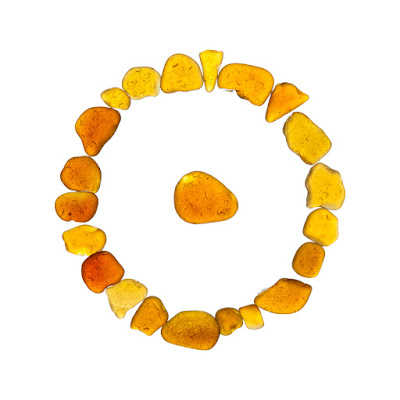The Greek letter π (pi) was derived from the ancient Phoenician letter 𐤐 (pē).
The number π (named so after the first letter of the Greek word περιφέρεια, “circumference”) is a mathematical constant, a transcendental number with approximate value of 3.141592. It is defined as the ratio of the circumference of a circle circumference C to its diameter D (or to twice the radius r):
The lower-case letter π is also used as a symbol of:
- in biochemistry: a π-helix, a type of protein secondary structure
- in chemistry: a π bond and π molecular orbital
- in mathematics: the prime-counting function
- in particle physics: a pion (aka pi meson), any of three subatomic particles: π0, π+, π−
More photos related to circles, letters, numbers and sea glass @ Shutterstock.


































